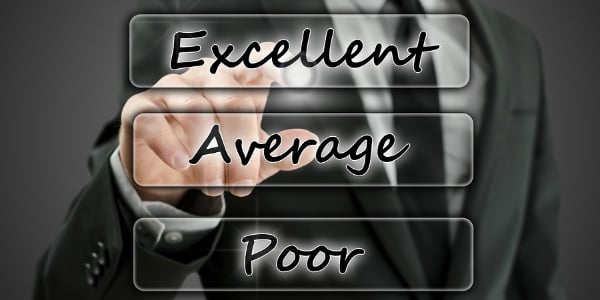Why measure workplace effectiveness?

When we discuss the capital costs and investments associated with operating and growing our client’s organizations, Credit Union executives are always drawn to the subject of employee compensation and benefits, of course. This can be expected as employee costs account for a significant segment of your operating expenses. If we could identify ways in which we could essentially improve the efficiency, or as we call it at Momentum, the workplace effectiveness of your staff, we would jump on it, right? Good…let’s talk.
Early in my career, we were challenged by executives to design their vision of an efficient operations facility. Translated, that meant “design a space for our Credit Union that can fit as many workstations as humanly possible in a nice, square, beige colored box.” Windows and rooms with views were reserved for the executive team and the employee lounge was often located in the basement. When you went for a meeting with “the man”, it was a long trudge up to the top floor, or to the principal’s office as we lovingly referred to it. Those days are done, my friends…and it’s a good thing.
That’s when baby boomers like me were happy to have a job and we were focused on moving up the corporate ladder, somewhat unaware of our work environs. We only worked from home when we were sick. Certainly, we never imagined working on a laptop in the company cafeteria, video-conferencing colleagues across the country or working out in the company fitness center. For added effect, I’m typing this article on my iPad, at 38,000 ft somewhere over Montana, while my sons text World Cup updates to me.
As the workplace has evolved, so has the manner in which we measure the performance, or the effectiveness of the workplace. No longer do our designers fill spaces with rows upon rows of 6’ tall Dilbertville workstations. “Hey, it’s functional so it’s effective, right?” We are now charged with taking a deep, unfiltered look at how the physical workplace and environment supports the activities and functions that take place inside the space. A pre-occupancy evaluation of the proposed use of the space is now an essential part of the script and all occupants must be engaged in the process for it to be of value.
Along those lines, a post-occupancy evaluation that is based on user data, insight and real time experience is the tool that validates our original design thoughts, and allows us to adjust to the eventual workplace changes that will take place. In this manner, we can do our best to ensure that beyond the workplace being a bustling hub of energy and activities, that it also is a space that enables our employees to achieve their required personal performance outcomes as well.
So where do we start and how do we convey the importance of measuring and improving workplace effectiveness to Credit Union executive teams and boards? We start by looking at the bottom line and by asking these strategic questions:
- How much do we currently invest in employee benefits and compensation as related to office occupancy and operations expenses?
- How do we manage and leverage our employee and facilities costs more effectively?
- How do we develop a workplace that also reflects our core values, serves to attract new talent, as well as retain the talent that we have heavily invested in?
It’s no secret that for the average Credit Union, employee compensation and benefits can be 2 to 4 times the cost of office occupancy and operations expenses. Think about that for a minute. Then factor in annual escalation costs of 3-5%, be reminded that staff counts increase as you grow, and then finally, project those costs out 20 years. It’s staggering when you place things in that perspective but it’s your responsibility as an executive to do so.
Now, let’s discuss what we can do by applying employee behavior research, in-depth data analytics and workplace design tactics, to drive planning and design decisions, so that we can improve the effectiveness of your staff. Three key factors stand out for us as researchers, workplace planners and designers:
- Occupancy costs
- Space utilization
- Employee satisfaction
When valued together, these factors outline the basis for a formula that highlights the relationship between your workplace and the people that use the space…your staff. Think in terms of “testing” the functionality of the space, prior to investing in designing and developing the space.
We do so by applying proven evaluation tools and indices to benchmark and measure the use of the space, in relationship to the actual employee satisfaction of using the space. An index per se that can be used in conjunction with capital and development costs to measure the potential improvements in workplace effectiveness. Can you envision how one might use this information to help forecast an ROI on the investment made in your staff and their workplace? We must, because without doing so, we are clearly being very short-sighted in our approach to cost control and profitability.
Having access to the detailed survey information of over 64,000 workplace respondents (we call them knowledge workers in today’s economy), simple facts stand out. Only 54.1% of those surveyed believe that their workplace enables them to work productively. However, 84.8% believe that workplace design is important to performing their job at a high level. These statistics are based upon the review of detailed questions pertaining to how an individual works and how their workplace supports their work. This fact shouldn’t surprise you either, for when people are satisfied with their workplace, they feel more productive. Do I need to go further?
Most executives understand the connection between lower employee satisfaction and the need for a higher performing workplace. However, the wise among your peers recognize this as an opportunity for making significant improvements to the bottom line, as well as the opportunity to take the long-term performance of their employees and associates to a higher level. If this makes sense to you, join the bandwagon of Credit Union executives for whom the future is looking quite bright.





